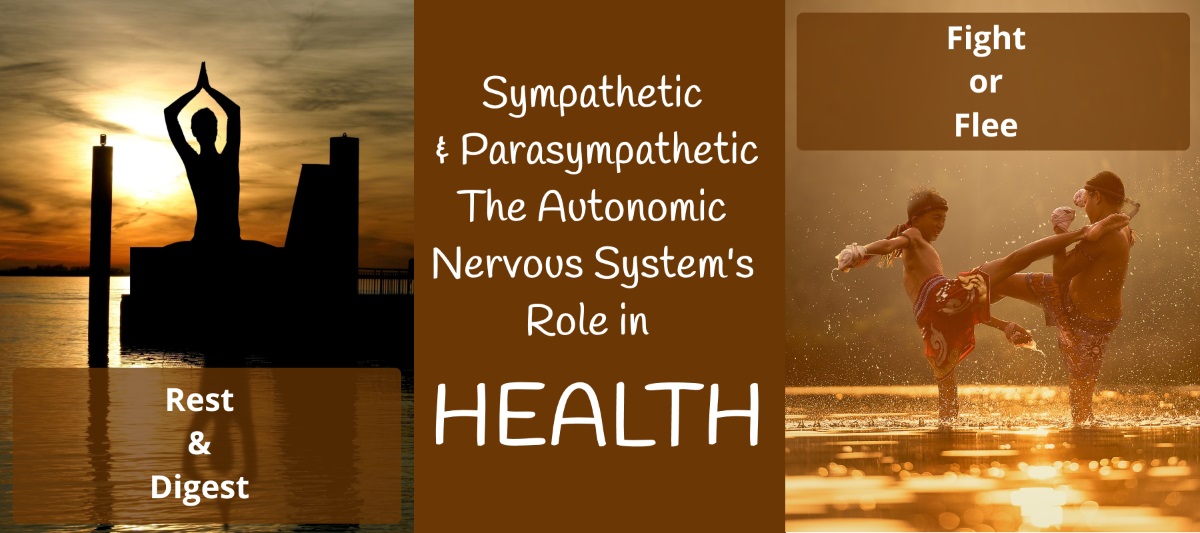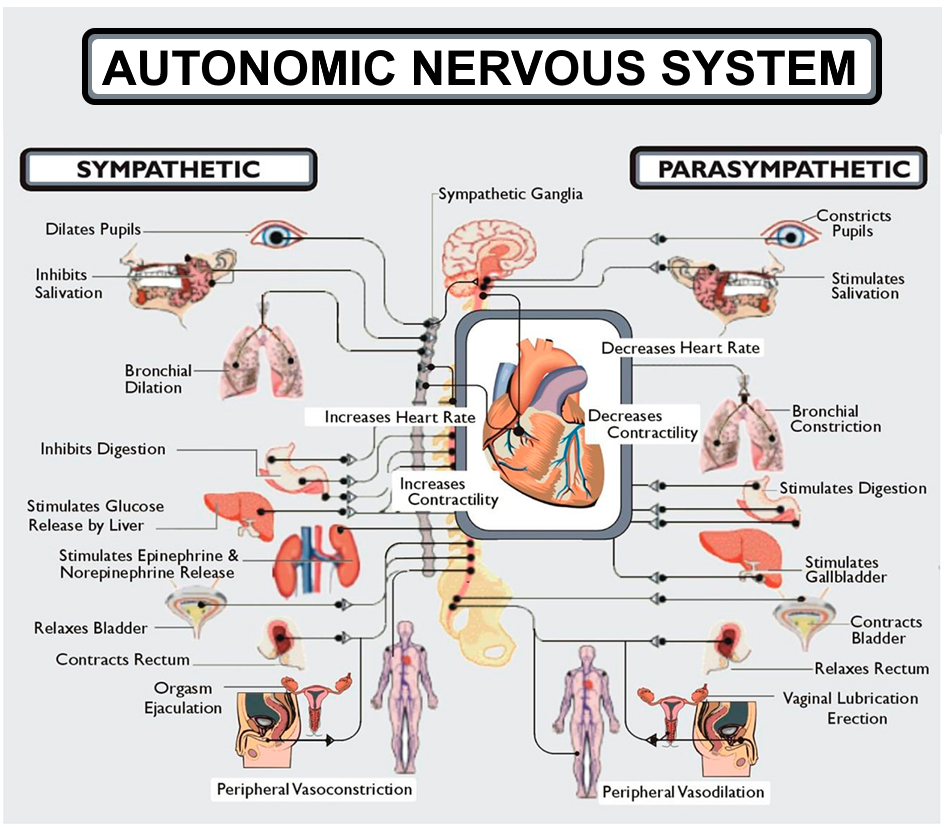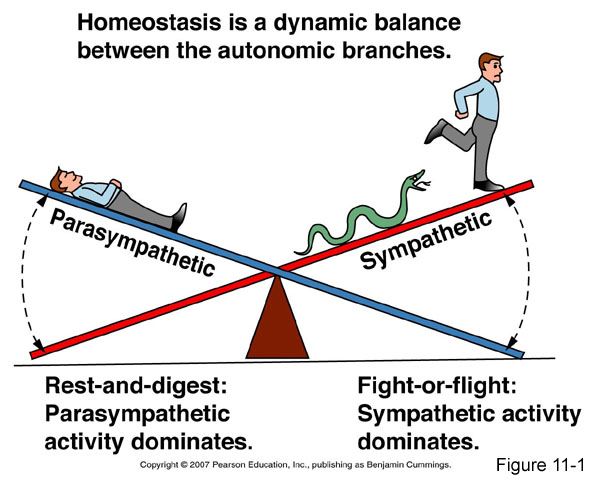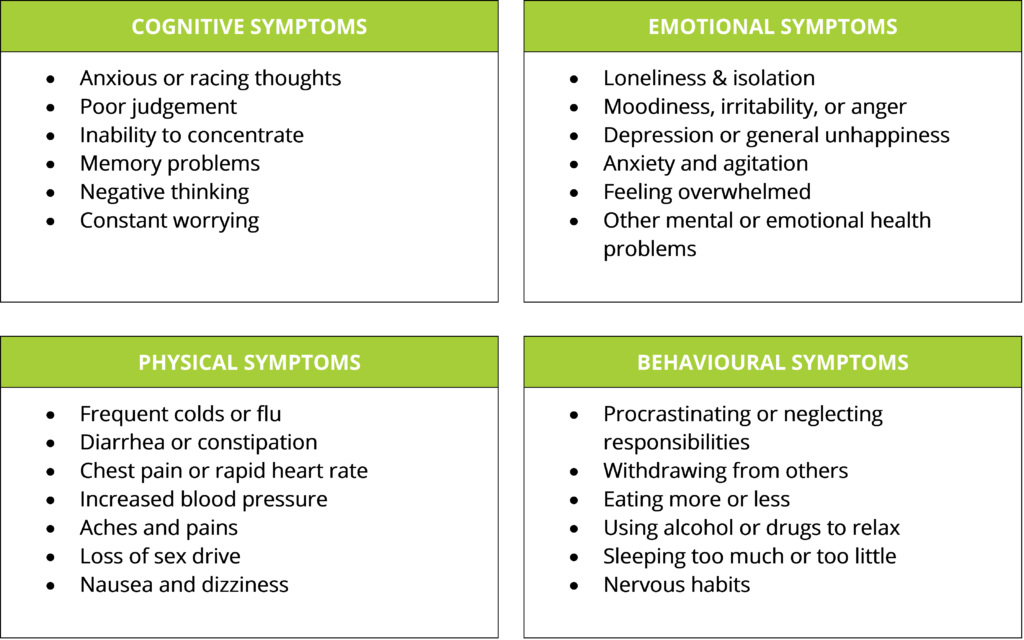
The start of the new year marks the start of our Introductory Series. This series of articles, posted over the next several months, will provide you with a general understanding of the basics of physiology, pain & inflammation, and how LED light can help address and ease the symptoms of many common illnesses.
In November 2016, we hosted an Introduction to LED Light Therapy Seminar where the topic of Sympathetic and Parasympathetic Nervous Systems came up. During the discussion, it was easy to see that many people have a limited understanding of the functions of these two systems and how they impact our health.
Before we discover how these two systems affect our health, it’s important to understand exactly what these systems are:
Autonomic Nervous System

The Parasympathetic Nervous System (PSNS) and the Sympathetic Nervous System (SNS) are two branches of the Autonomic Nervous System (ANS). The functions of the Automatic Nervous System are reflexive and involuntary; the ANS regulates heart & breathing rates, blood pressure, stomach & intestine activities (digestion), expansion or contraction of blood vessels, pupil dilation, and has some control over muscle function. We are seldom conscious of the effects of the Autonomic Nervous System, but its functions are crucial to our survival.
The short & entertaining video from Crash Course, below, gives an educational overview of the functions of the Autonomic Nervous System.
Sympathetic Nervous System
The Sympathetic Nervous System controls the body’s responses to perceived threats and prepares the body for stressful or emergency situations; it is responsible for our “flight, fight or freeze” reactions. The SNS is responsible for releasing adrenaline, speeding up your body’s responses, so you become more alert and aware of your surrounding and possible threats. Muscles contract, breathing and heart rate increase to push more oxygen to your muscles, and glycogen is converted into glucose for muscle energy. Bodily functions not critical to survival are shut down; stomach secretions and movement are slowed, saliva productions decreases, urinary output shuts down.
Parasympathetic Nervous System
The Parasympathetic Nervous System controls the body’s response during normal situations where there is no perceived threat. It is the counterbalance to the Sympathetic Nervous System and restores the body to a state of calm. Breathing and heart rates are returned to normal, muscles relax, saliva and stomach secretions increase, stimulating the digestive tract to process food and eliminate wastes. The PNS is the body’s “rest & digest” state.
The SNS & PSNS Roles in Health
The Sympathetic Nervous System’s reaction to stress, the “fight, flight, or freeze” response, evolved as a survival mechanism. The near-instantaneous hormonal and physiological changes allowed our ancient ancestors to react quickly to life-threatening situations. It is a crucial element in our survival, allowing us to fight off threats or flee to safety. However, this integral system cannot differentiate between the threat of a pouncing tiger and the threat of a traffic jam or work pressures.
The Parasympathetic and Sympathetic Nervous Systems work like a teetertotter; only one system can be active, or “up”, at a time. In ideal situations, the PSNS is the main system at work and the SNS is only activated as necessary. However, as stress in our daily lives increases, the more the SNS responds. For some of us, this response is constantly activated, meaning that instead of being in a continual Parasympathetic state, we are perpetually on edge.

Repeated or long-term activation of the stress response contributes greatly to poor health. Research suggests that it can lead to high blood pressure, increases the formation of artery-clogging deposits, and causes changes to the brain that lead to anxiety, depression, and addiction. Chronic stress can also lead to obesity by causing people to eat more and decreasing sleep and exercise.
Acute stress – the stress we feel when faced with an immediate crisis – is beneficial, as it primes your body and brain for immediate action and peak performance. However chronic stress – the kind most of us face daily – can be disastrous for our health. It disturbs nearly every bodily system. Your immune system weakens, digestive and reproductive systems become slower, blood pressure rises, increasing the risk of heart attack and stroke, the aging process speeds up, and you may be vulnerable to many cognitive, emotional, physical or behavioural problems:

Returning to Homeostasis
A side effect of constant stress is that it makes you more prone to feeling the effects of stress. The amygdala is your brain’s fear center. As stress builds up, it increases the size, activity level, and number of neural connections in this part of your brain, making you more fearful, which causes more stress, which increases the number of neural connections, which makes you more fearful still. It is a vicious cycle.
Homeostasis is the tendency of the body to seek and maintain a stable balance between interdependent elements within its internal environment. The Autonomic Nervous System strives for homeostasis. However, our external environment can make this difficult with the constant activation of the Sympathetic Nervous System.
As mentioned above, the Autonomic Nervous System works like a teetertotter. Your body can only have one active branch at a time. Ultimately, you want the Parasympathetic Nervous System to be the active one. So what can you do if your amygdala is preventing that?
Retraining your Body with PolyChromatic LED Light
Light therapy can be incredibly helpful in teaching your body how to relax again. First of all, you are required to lie still for the 20-minute session. Not many of us force ourselves to take this time to ourselves, so this alone can make a huge difference in stress levels. Secondly, is the power of light itself. PolyChromatic LED Light devices are scientifically proven to promote relaxation by improving circulation and prompting the release of the body’s own anti-stress chemical, Nitric Oxide.
A single 20-minute session can force your body from the Sympathetic Stress Response and activate the Parasympathetic Relaxation Response. With regular light sessions, you can retrain your Autonomic Nervous System to make the switch from Sympathetic to Parasympathetic faster and easier over time.
Discover how yourself! Contact us to find out how you can experience a complimentary light session.
Sources
http://www.holistic-nourishment.com/2012/08/29/role-of-the-autonomic-nervous-system/
http://www.health.harvard.edu/staying-healthy/understanding-the-stress-response
http://www.diffen.com/difference/Parasympathetic_nervous_system_vs_Sympathetic_nervous_system
https://www.helpguide.org/articles/stress/stress-symptoms-causes-and-effects.htm
https://bebrainfit.com/effects-chronic-stress-brain/
© Trina Waller and Western Canadian Health Products Ltd., 2014 – 2017. All rights reserved. Unauthorized use and/or duplication of this article, and the material contained within, without express written permission from this blog’s author and/or owner is strictly prohibited. Excerpts and links may be used, provided that full and clear credit is given the post author, Trina Waller, Western Canadian Health Products Ltd., and WholeHealthatHome.com, with appropriate and specific direction to the original content.
Disclaimer: The content of this website is provided for informational purposes only. It is not intended as medical advice and should not be construed as such. Light devices are not intended to cure, treat, or prevent any disease or illness. If you have a disease or illness, consult with your physician or health care provider prior to using any light device. Use only as directed by manufacturer.
